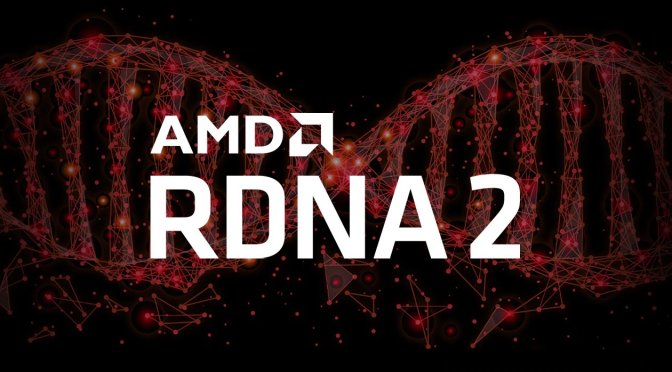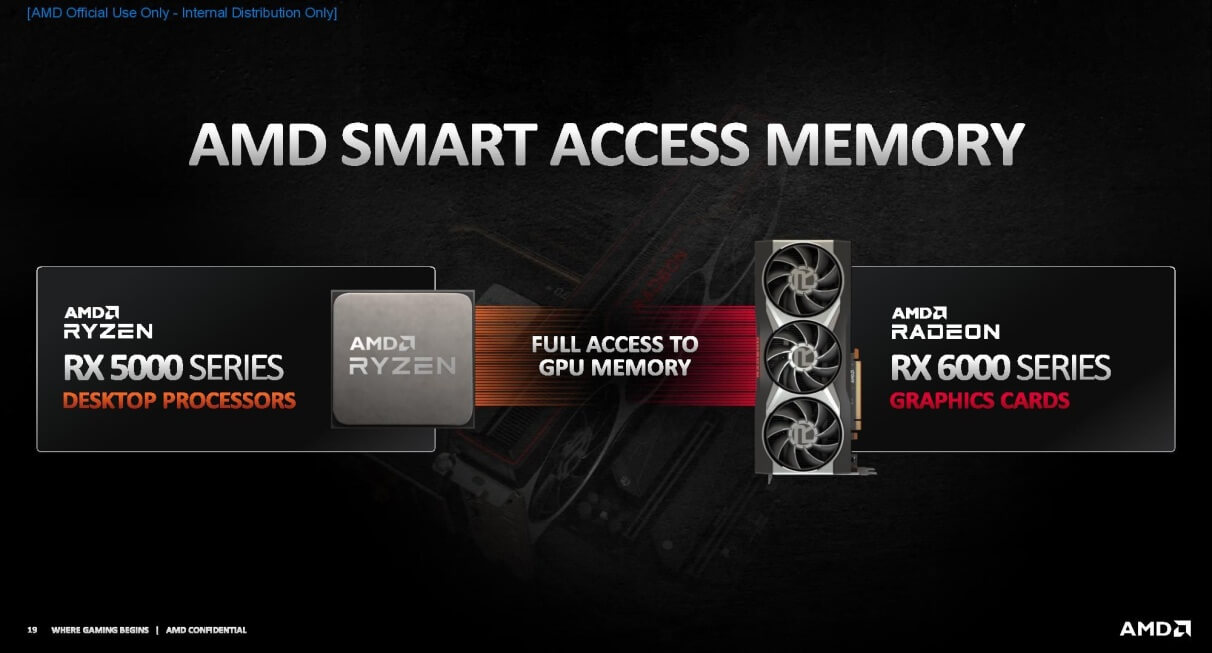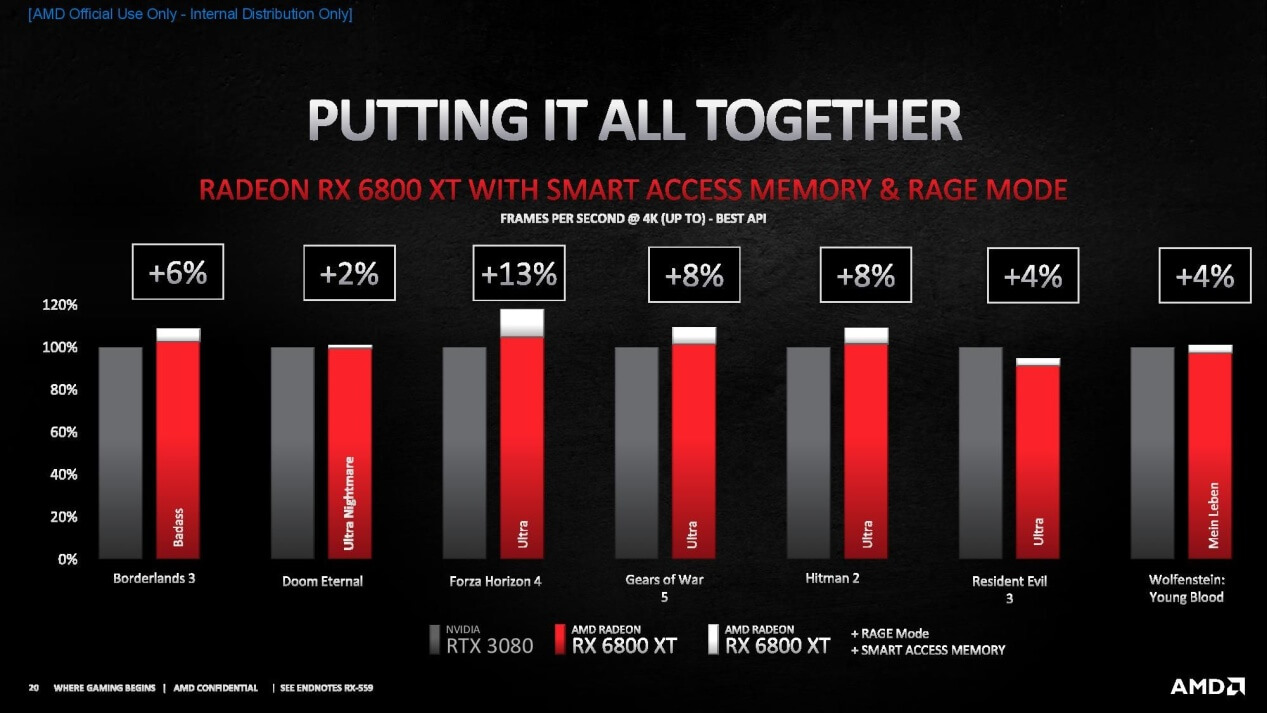AMD has just announced its RDNA 2-based flagship Big Navi graphics cards, the Radeon RX 6900XT, RX 6800XT and RX 6800, respectively. The Red team introduced three graphics cards based on RDNA2 GPU architecture with prices ranging from 579 to 999 USD. AMD will be competing with NVIDIA, and directly targeting each of the RTX 30 series Ampere-based SKUs.
AMD also introduced three new features, the RAGE Mode, Infinity Cache, and Smart Access Memory, respectively. RAGE mode appears to be an automatic one-click overclocking/OC button built-in the Radeon Software package.
RAGE Mode automatically takes advantage of the overclocking headroom built into the GPU, to give every bit of performance it has to offer.
The new Smart Access Memory feature on the other hand will boost the overall gaming performance by optimizing the data transfer between the CPU and the GPU.
What this basically means is that the Radeon RX 6000 GPUs can now work and operate in tandem with AMD’s Ryzen 5000-series processors, provided you use a 500-series compatible motherboard, through this new Smart Access Memory feature. To quote AMD:
AMD Smart Access Memory –“An exclusive feature of systems with AMD Ryzen™ 5000 Series processors, AMD B550 and X570 motherboards and Radeon™ RX 6000 Series graphics cards.
It gives AMD Ryzen™ processors greater access to the high-speed GDDR6 graphics memory, accelerating CPU processing and providing up to a 13-percent performance increase on a AMD Radeon™ RX 6800 XT graphics card in Forza Horizon™ 4 at 4K when combined with the new Rage Mode one-click overclocking setting”.
Smart Access Memory aims at optimizing both the GPU and CPU to offer the best possible performance when they operate in tandem.
According to the concept, once you enable the Smart Memory Access feature in the RX6000 card’s VBIOS and the motherboard BIOS, both the CPU and GPU will gain full access to each other’s memory. Doing this will maximize data transfer and performance between the CPU and the GPU’s VRAM.
Smart Access Memory helps boost performance by enabling faster data transfer speeds between the CPU and GPU. And by pairing this efficient data transfer smart access feature with the new 128MB Infinity Cache might help boost the throughput between the CPU and the GPU as well.
The new Infinity Cache takes advantage of the GPU’s data paths to maximize performance while minimizing the data movement and power within the GPU itself.
According to AMD, Infinity Cache delivers a 10% increase in power efficiency and it also doubles the bandwidth (almost 117% increase), all at a lower power than traditional memory. Infinity Cache is based on the Zen CPU’s L3 cache design.
Infinity Cache boosts performance-per-clock scaling as frequency increases largely because the GPU is now less constrained by external memory bandwidth limits. The Infinity Cache also boosts ray tracing performance, as more of the data set is kept closer to the compute units to feed.
AMD Infinity Cache – “A high-performance, last-level data cache suitable for 4K and 1440p gaming with the highest level of detail enabled. 128 MB of on-die cache dramatically reduces latency6 and power consumption7, delivering higher overall gaming performance than traditional architectural designs.”
AMD says combining both the RAGE Mode and Smart Access Memory feature will give a boost in performance of up to 13% in games. Though, it remains to be seen how these new features are going to work in tandem.
Most importantly, AMD says that individual game developers will have to optimize games for this new Smart Memory Access feature. Which means it could take six to twelve months before we can see this new tech in games.
Lastly, AMD’s Radeon RX 6000 GPUs will also support the DirectStorage API, which might help reduce the game load times.
Stay tuned for more!
Hello, my name is NICK Richardson. I’m an avid PC and tech fan since the good old days of RIVA TNT2, and 3DFX interactive “Voodoo” gaming cards. I love playing mostly First-person shooters, and I’m a die-hard fan of this FPS genre, since the good ‘old Doom and Wolfenstein days.
MUSIC has always been my passion/roots, but I started gaming “casually” when I was young on Nvidia’s GeForce3 series of cards. I’m by no means an avid or a hardcore gamer though, but I just love stuff related to the PC, Games, and technology in general. I’ve been involved with many indie Metal bands worldwide, and have helped them promote their albums in record labels. I’m a very broad-minded down to earth guy. MUSIC is my inner expression, and soul.
Contact: Email



